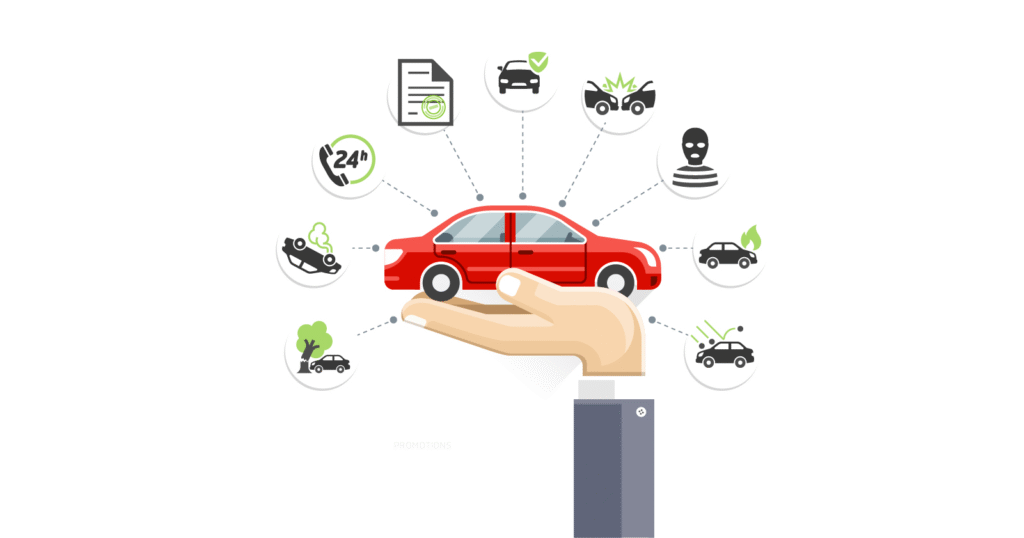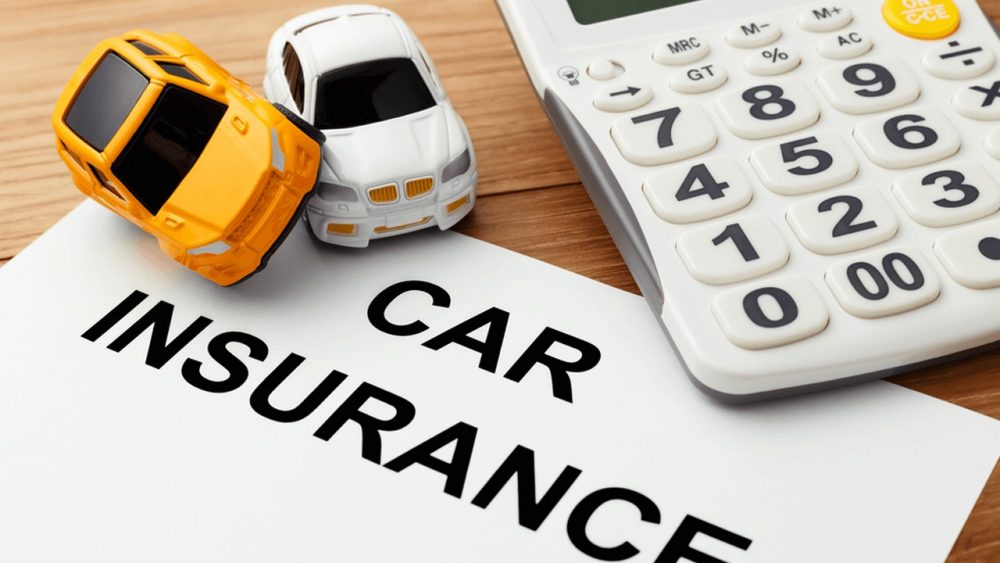Choosing the right car insurance policy is a crucial decision for every vehicle owner. With numerous options available in the market, selecting a policy that aligns with your specific requirements can be overwhelming. This comprehensive guide aims to demystify the process, providing you with the knowledge to make an informed choice.
Key Takeaways
- Comprehensive Coverage: for policies that offer extensive protection, including third-party liabilities and own damage.
- High Claim Settlement Ratio: Choose insurers with a high CSR for reliable claim settlements.
- Valuable Add-Ons: Enhance your policy with add-ons like Zero Depreciation and Roadside Assistance.
- Maintain a Claim-Free Record: This can lead to significant savings through No Claim Bonuses.
- Balance Cost and Coverage: Ensure that the premium aligns with the coverage provided.
By keeping these points in mind, you can select a car insurance policy that best suits your needs, providing peace of mind on the road.
Absolutely! Here’s an expanded and more detailed description you can use to further enhance your article on “What Is the Best Car Insurance Policy for Your Needs?” – ideal if you’re building toward a long-form, 12,000-word article.
In-Depth Description: Choosing the Best Car Insurance Policy for Your Needs

The Purpose of Car Insurance: More Than a Legal Requirement
Car insurance isn’t just a legal mandate—it’s a shield that protects you, your vehicle, and others on the road from financial and legal complications. While third-party coverage ensures you meet minimum legal requirements, comprehensive insurance is what truly safeguards you from out-of-pocket expenses after accidents, theft, natural disasters, and vandalism.
A carefully chosen policy can mean the difference between a quick recovery and a financial nightmare.
How to Assess Your Needs: Start With Your Vehicle and Driving Habits
Choosing the right car insurance policy begins with a clear understanding of your unique circumstances—especially the type of vehicle you own and how you use it. Insurance is not a one-size-fits-all product. Your driving habits, vehicle condition, location, and lifestyle play critical roles in determining the coverage you actually need. Taking time to assess these factors upfront will help you avoid paying for unnecessary features or, worse, being underinsured when it matters most.
Before selecting a policy, ask yourself the following:
- Is your vehicle new or pre-owned?
- Is it used for personal or business purposes?
- Do you frequently drive long distances?
- Do you live in an area prone to floods, theft, or heavy traffic?
Your answers influence the kind of coverage you’ll need. For example, if your car is less than 5 years old, a Zero Depreciation Cover is often worth the higher premium. If you drive in remote or accident-prone areas, Roadside Assistance or Engine Protection Cover can be lifesavers.
Comprehensive vs. Third-Party Insurance: What’s the Real Difference?
When it comes to car insurance, understanding the difference between comprehensive and third-party insurance is fundamental. Both types serve distinct purposes, offer different levels of protection, and vary widely in cost. Knowing their differences helps you choose a policy that best fits your vehicle’s value, your budget, and your risk tolerance.
- Third-Party Liability Insurance
- Covers injuries/damages to third parties
- Does not cover damage to your own car
- Cheaper but very limited in scope
- Mandatory in most countries (including India, UK, etc.)
- Comprehensive Insurance
- Covers third-party liabilities and own damage
- Can include personal accident cover
- Eligible for add-ons (e.g., NCB, Return to Invoice)
- Ideal for newer or more expensive vehicles
While third-party plans save money upfront, they can cost you more in the long run if your car gets damaged or stolen.
Add-On Covers: Tailoring Your Policy for Extra Protection
Think of add-ons like custom upgrades for your policy. The best insurers offer riders like:
- Zero Depreciation Cover – No deduction for part wear and tear during claim settlement
- Roadside Assistance – 24/7 towing, fuel delivery, minor repairs on-site
- Consumables Cover – Covers items like engine oil, nuts, bolts, etc. not normally covered
- Return to Invoice Cover – Pays the full invoice value of your car if it is stolen or totaled
- Engine Protection – Particularly useful in flood-prone regions
While these add-ons increase your premium, they offer much greater financial safety when you actually need to file a claim.
Claim Settlement Ratio (CSR): Why It’s Non-Negotiable
A policy is only as good as its claim process. A company with a high CSR is more likely to honor your claim quickly and without excessive documentation. Always:
- Check the CSR over the last 3–5 years
- Read real customer reviews
- Look for digital claim options (some insurers settle claims within hours)
A CSR above 95% is generally considered excellent.
Add-On Covers and Customization

Add-ons enhance your base policy with extra protections, such as:
- Zero Depreciation Cover: Covers full cost of parts without depreciation deductions.
- Roadside Assistance: Help with towing, battery jump-starts, fuel delivery, etc.
- Engine and Gearbox Protection: Covers repairs to critical components.
- Return to Invoice Cover: Pays the invoice price in case of total loss.
- Key Replacement and Consumables Cover: Protection for lost keys and consumables like brake oil.
Choose add-ons based on your budget and specific needs.
Online vs. Offline Purchase: Which Is Better?
- Online Policies
- Often cheaper due to no agent commissions
- Transparent features comparison
- Instant issuance and digital claim filing
- Offline Policies
- Personalized assistance
- Easier for first-time buyers unfamiliar with insurance terms
Pro Tip: Even if you choose to buy offline, use online platforms to compare plans, premiums, and reviews beforehand.
Understanding IDV (Insured Declared Value): A Critical Detail
Your IDV is the maximum amount you will get if your car is stolen or totaled. It’s calculated based on your car’s current market value minus depreciation.
- Higher IDV = higher premium but better compensation
- Lower IDV = cheaper premium but lesser claim payout
Some insurers let you customize your IDV—always make sure it’s close to the real resale value of your car.
Renewal Tips: Don’t Lose Your NCB!
Always renew your policy before it expires. If there’s a lapse:
- Your No Claim Bonus (NCB) may be lost
- You may need to get your vehicle re-inspected
- You’ll be uninsured and at legal/financial risk during the gap
Some insurers offer a grace period of 30 days, but don’t rely on it. Renew early and consider switching providers if you find a better deal.
Quick and Paperless Claims Processing

Perhaps the most transformative impact of technology is seen in claims handling. Traditional claim processes were often slow, cumbersome, and paper-heavy. Today:
- You can file claims via mobile apps or websites by uploading photos and documents digitally
- Insurers use AI-powered tools and automated claim assessments to speed up claim approvals
- Some companies offer cashless claims where repairs at network garages are billed directly to insurers
- GPS and telematics data help verify accidents and speeding claims, reducing fraud
These digital tools significantly reduce claim turnaround times, enhancing customer satisfaction
Digitization in Car Insurance: How Technology Improves Service
The car insurance industry has undergone a significant transformation over the past decade, largely driven by digitization and technological advancements. Traditional methods involving stacks of paperwork, manual claim processes, and in-person meetings are rapidly being replaced by streamlined, efficient digital solutions. These innovations have made buying, managing, and claiming car insurance easier, faster, and more transparent for customers.
Modern insurers are embracing AI, automation, and mobile apps to make the process smoother. Benefits include:
- Instant policy issuance
- Paperless claims and renewals
- Real-time claim tracking
- Chatbot support and emergency contact
Companies like Tata AIG, Bajaj Allianz, and Acko are leading in digital-first experiences.
Red Flags to Watch Out For
- Low premiums but poor claim records
- Hidden fees or unclear IDV values
- No mention of add-ons in your policy document
- Poor customer service ratings
- Non-transparent renewal process
Always read the Policy Wordings and Terms & Conditions carefully before buying.
Bonus: Quick Checklist Before You Buy
Decide between comprehensive or third-party
Compare at least 3 quotes
Look for high CSR and good reviews
Verify IDV
Review policy terms, exclusions, and renewal rules
Understanding Car Insurance
Car insurance is a contract between you and an insurance company designed to protect you financially in case of accidents, theft, or damage to your vehicle. In exchange for regular premium payments, the insurer agrees to cover certain costs arising from incidents involving your car, depending on the type of policy you choose.
Understanding the basics of car insurance is essential for making informed choices, ensuring adequate protection, and avoiding unexpected expenses.
There are primarily two types of car insurance policies:
- Third-Party Liability Insurance: This is the most basic form of car insurance, covering damages to a third party’s property or injuries caused to them due to your vehicle.
- Comprehensive Car Insurance: This policy offers broader coverage, including third-party liability, damage to your own vehicle, theft, and natural disasters.
Factors to Consider When Choosing a Car Insurance Policy

Selecting the right car insurance policy is essential to ensure you are adequately protected while also getting good value for your money. With a variety of policies available in the market, it can be overwhelming to decide which one suits your needs best. Here are the key factors you should consider before making your decision:
Selecting the best car insurance policy involves evaluating several key factors:
Coverage Options
Ensure the policy provides adequate coverage for both third-party liabilities and damages to your own vehicle. Comprehensive policies offer extensive protection, including theft, fire, and natural calamities.
Network of Cashless Garages
A wide network of cashless garages ensures convenience in repairs without upfront payments. Companies like Tata AIG offer access to over 7,500 cashless garages across India .
Add-On Covers
Add-ons enhance your policy’s coverage. Popular add-ons include:
- Zero Depreciation Cover: Waives off depreciation on parts, ensuring full claim amount.
- Roadside Assistance: Provides help in case of breakdowns.
- Engine Protection Cover: Safeguards against engine-related damages.
No Claim Bonus (NCB)
NCB rewards policyholders for claim-free years with discounts on premiums. Over time, this can lead to significant savings.
Premium Costs
While opting for the lowest premium may be tempting, it’s essential to balance cost with coverage. Sometimes, slightly higher premiums offer more comprehensive protection.
Also Read: How Do You Choose the Right Life Insurance Plan?
Conclusion
Selecting the best car insurance policy requires careful consideration of your specific needs, budget, and the coverage options available. By evaluating factors like CSR, add-ons, NCB, and premium costs, you can make an informed decision that ensures comprehensive protection for your vehicle.
Finding the best car insurance policy isn’t just about selecting the cheapest premium or the most well-known provider. It’s about matching your unique needs—your vehicle, driving habits, financial goals, and risk tolerance—with a policy that offers the right balance of coverage, affordability, and reliability.
In today’s fast-paced and digitally driven world, you have more tools than ever to research, compare, and purchase the right car insurance. Yet, despite the convenience, the process requires thoughtful consideration. From evaluating third-party vs. comprehensive coverage, understanding add-ons, and factoring in claim settlement ratios, to reviewing policy terms and renewal timelines, every decision can have a significant impact on your financial well-being in the event of an accident or loss
FAQs
Is third-party insurance sufficient for my car?
A1: While third-party insurance is mandatory, it only covers damages to others. For comprehensive protection, consider opting for a comprehensive policy.
How can I avail of a No Claim Bonus?
A2: Maintain a claim-free record for consecutive years to earn NCB, which can be used to reduce your premium.
Are add-on covers worth the extra cost?
A3: Add-ons like Zero Depreciation and Engine Protection provide additional security, making them valuable investments.
How do I file a claim?
A4: Contact your insurer’s helpline or use their mobile app to initiate the claim process.
Can I transfer my policy to a new vehicle?
A5: Yes, most insurers allow policy transfer to a new vehicle, subject to certain conditions.
What is the waiting period for claims?
A6: The waiting period varies by insurer and policy type. It’s advisable to check the terms before purchasing.
How can I renew my policy?
A7: Policies can be renewed online through the insurer’s website or mobile app.


